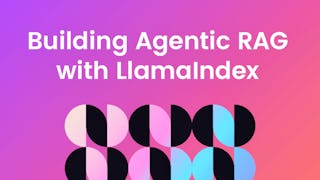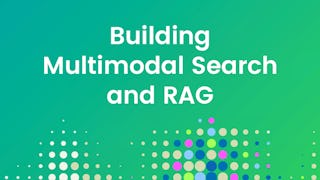Data Scientists, AI Researchers, Robotics Engineers, and others who can use Retrieval-Augmented Generation (RAG) can expect to earn entry-level salaries ranging from USD 93,386 to USD 110,720 annually, with highly experienced AI engineers earning as much as USD 172,468 annually (Source: ZipRecruiter).



Build RAG Applications: Get Started
This course is part of multiple programs.


Instructors: Wojciech 'Victor' Fulmyk
Access provided by Fractal
8,361 already enrolled
(75 reviews)
Recommended experience
What you'll learn
Develop a practical understanding of Retrieval-Augmented Generation (RAG)
Design user-friendly, interactive interfaces for RAG applications using Gradio
Learn about LlamaIndex, its uses in building RAG applications, and how it contrasts with LangChain
Build RAG applications using LangChain and LlamaIndex in Python
Skills you'll gain
Details to know

Add to your LinkedIn profile
6 assignments
May 2025
See how employees at top companies are mastering in-demand skills

Build your subject-matter expertise
- Learn new concepts from industry experts
- Gain a foundational understanding of a subject or tool
- Develop job-relevant skills with hands-on projects
- Earn a shareable career certificate

There are 3 modules in this course
This module provides an overview of Retrieval-Augmented Generation (RAG), illustrating how it can enhance information retrieval and summarization for AI applications. The module features a lab designed to introduce the fundamental components of building RAG applications, presented in an easy-to-use Jupyter Notebook format. Through this hands-on project, you’ll learn to split and embed documents and implement retrieval chains using LangChain.
What's included
4 videos2 readings2 assignments1 app item1 discussion prompt3 plugins
In this module, you'll learn to build a Retrieval-Augmented Generation (RAG) application using LangChain, gaining hands-on experience in transforming an idea into a fully functional AI solution. You'll also explore Gradio as a user-friendly interface layer for your models, setting up a simple Gradio interface to facilitate real-time interactions. Finally, you'll construct a QA Bot leveraging LangChain and an LLM to answer questions from loaded documents, reinforcing your understanding of end-to-end RAG workflows.
What's included
1 video1 reading2 assignments2 app items2 plugins
This module introduces you to LlamaIndex as an alternative to LangChain, helping you understand how to apply your RAG knowledge across different frameworks. You will explore the differences between these frameworks and gain hands-on experience by building a bot with IBM Granite and LlamaIndex that provides individuals with suggestions on engaging in conversations. When completing this project, you will learn about implementing key concepts such as vector databases, embedding models, document chunking, retrievers, and prompt templates to generate high-quality responses.
What's included
3 videos3 readings2 assignments1 app item2 plugins
Earn a career certificate
Add this credential to your LinkedIn profile, resume, or CV. Share it on social media and in your performance review.
Offered by
Why people choose Coursera for their career




Learner reviews
75 reviews
- 5 stars
72.72%
- 4 stars
20.77%
- 3 stars
1.29%
- 2 stars
2.59%
- 1 star
2.59%
Showing 3 of 75
Reviewed on Jul 22, 2025
This is an excellent course in which I learned about RAG.
Reviewed on Aug 23, 2025
Despite being well structured course material and passing relevant experinece, the code showcased, the libraries used are outdated.
Reviewed on Aug 30, 2025
The course is awesome!. I got clear understanding of RAG and LlamaIndex





